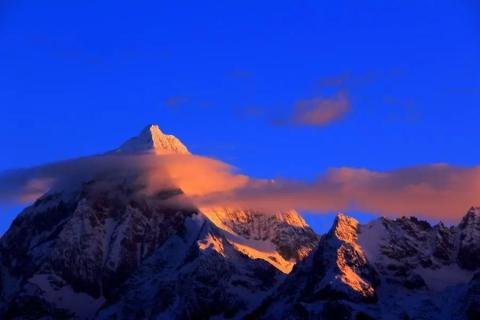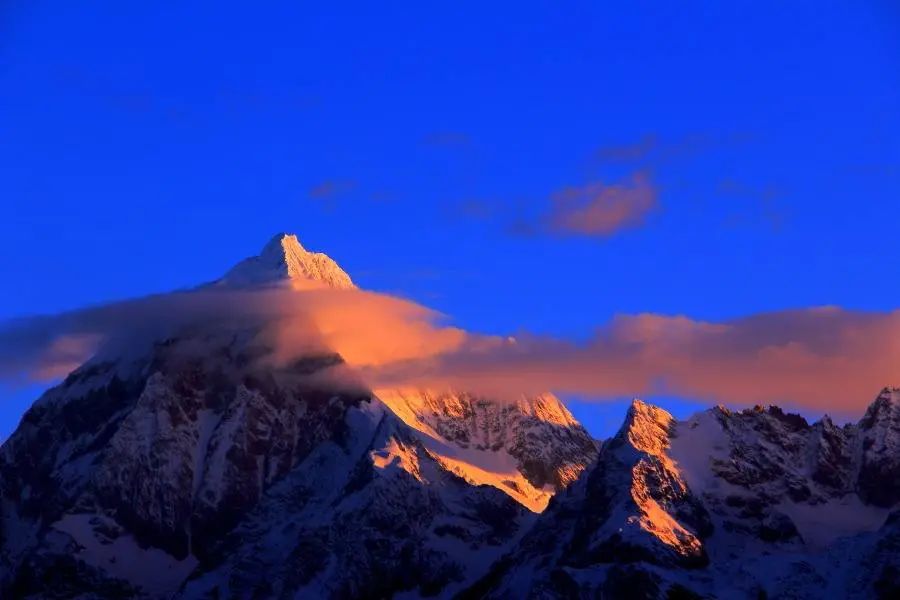
of two
♪
Tibet trip XI ZANG XING
Because it is a high altitude area and the distance is long ,
Therefore, I had doubts about whether I could go to Tibet and see it in this lifetime.

Overnight at Nagenla Pass

Morning tour to Namtso

Namtso is the largest saltwater lake in Tibet and the highest saltwater lake in the world. "Namtso" means Tianhu, Spiritual Lake or Divine Lake. It is a famous holy lake in Tibetan Buddhism. Foreigners who come to Tibet should visit here whenever possible. In the early morning of July 10, we arrived at Namtso from Damxung. When I first arrived here, my genius was bright. We parked the car in the parking lot and went to the lake. It was about 1 kilometer from where we got off the bus to the lake. When we arrived at the lake, there were already some people patrolling the lake, as if they were waiting to watch the sunrise. Looking at the top of the hill not far from the lake, there are also many people, maybe they also want to see the magnificent scene of the sun rising on the snowy plateau.
It's a pity that the weather is not good. Although there is a hint of bright color in the eastern sky, the whole sky is gloomy. Dark clouds were low overhead. Under the reflection of such a sky, the lake water also looks very gloomy, and it is by no means as clear, translucent and moist as imagined. I once thought of words such as "lover's eyes" and "gentle jasper" commonly used in middle school students' compositions to describe Namtso, which I have longed for. However, the lake in front of me was as heavy as the dark clouds, which made me feel depressed. Even the mountains in the distance were painted dark brown by the dark clouds. In other words, the clouds in the sky, the mountains across the lake, and the lake in front of us were all so dark. What’s even more uncomfortable is that although it’s midsummer, it’s very cold by the lake. Even though I put on thermal underwear, a thick coat, and a woolen sweater, I still couldn’t beat the coldness by the lake. The cold wind made me feel like I was in the cold winter, and my legs were still trembling. Xia Lei wore thinner clothes and of course felt colder. So we hurriedly took a few photos by the lake as a souvenir and hurriedly left the lake.
After leaving the lake, we went to a restaurant owned by Sichuanese in the parking lot to have something to warm up. It was about half past seven when we arrived, and there were no customers in the hotel yet, so it seemed very deserted. The proprietress of the hotel was very enthusiastic when she saw us. She led us to the stove to warm ourselves and added cow dung cakes to the stove. We gathered around the stove to warm ourselves up while the landlady prepared breakfast for us. After a while, hot breakfast was brought over. We finished our breakfast quickly, but did not leave immediately. We greeted the landlady and continued to warm ourselves by the fire. The landlady graciously agreed and chatted with us. She said that she and her husband came here to open a restaurant, and they only opened the restaurant here for a few months a year. When the weather was cold in September, the mountain was closed and there were no tourists at all. The couple closed the business and returned to Chengdu until April of the following year. Come again. I asked her what will you do after returning to Chengdu? She said she was busy taking care of the children and doing housework while her husband went out to work. It seems that although the couple opened a restaurant, their life was still quite difficult. While we were chatting, the restaurant owner came back with two sacks of cow dung cakes. These two sacks of cow dung cake weighed at least 70 to 80 kilograms. At this high altitude, even if we climbed a slope or walked a few steps, we would feel out of breath. However, the hotel owner asked us to I bought two sacks of cow dung cakes. What is particularly worthy of our attention here is that usually such heavy menial work is done by small workers hired in the store, but the boss did it. It can be seen that although they open a restaurant, they don't make much money. The boss and his wife are both strong, about 40 years old, and look like farmers, not like a restaurant owner at all. The boss told us that these cow dung cakes are the main fuel for their restaurants. They are collected by Tibetans from pastoral areas and then transported here. Each hotel then sends people to buy them. I said it would be much more convenient and less labor-intensive if we use a wheelbarrow or a flatbed truck to tow it, or if we sell the cow dung cakes and deliver them to each house. The boss said that it was not easy to find a car in the mountains, and the Tibetans were unwilling to deliver the cow dung cakes to each house, so he had no choice but to buy them and pick them up. Speaking of this, we said that it is understandable that the hotel prices are relatively expensive.
In Namtso, although we did not enjoy the legendary charming scenery, we did not regret it. We had a certain understanding of the life of businessmen here.
Wandering around Potala Palace Square

Just let me stare at you like this
you look down at me
Sitting majestically on top of the mountain
My body is extremely heavy
Can't blend in with you
Then let my eyes fly over
Then let my mind fly
Then let my emotions fly
Then let my soul fly
Goshawks are circling in the sky
Hundreds of clouds are floating in the sky
The stars in the sky blink
The moon in the sky looks at the earth
The Potala Palace is with me
rising slowly
over and over again
How many times have you done it?
Only the black Buddha beads know
Tibetans bowed their heads
Awe of time
After time exits
The soul is like a white cloud
light and fluttering
Me sitting not far away
Eyes rise and fall with the kowtow
After secularity withdraws
The soul merges with the Tibetan people
Bajiao Street

Stuttering Village

I don’t know if it’s been forgotten by the language
Still forgetting the language
I don’t know if it’s been forgotten by the world
Still forgotten the world
should believe
Stuttering Village will not be forgotten by the gods
Because there is a spirit living in her heart
There is a god
Stuttering Village will not be lonely
There is a god
Stuttering Village is free
Baiyun touches Stuttering Village every day
Stars visit Stuttering Village every day
The Brahmaputra River carries news
Lush trees are always a companion
Stuttering Village is not alone
Loneliness is only time
